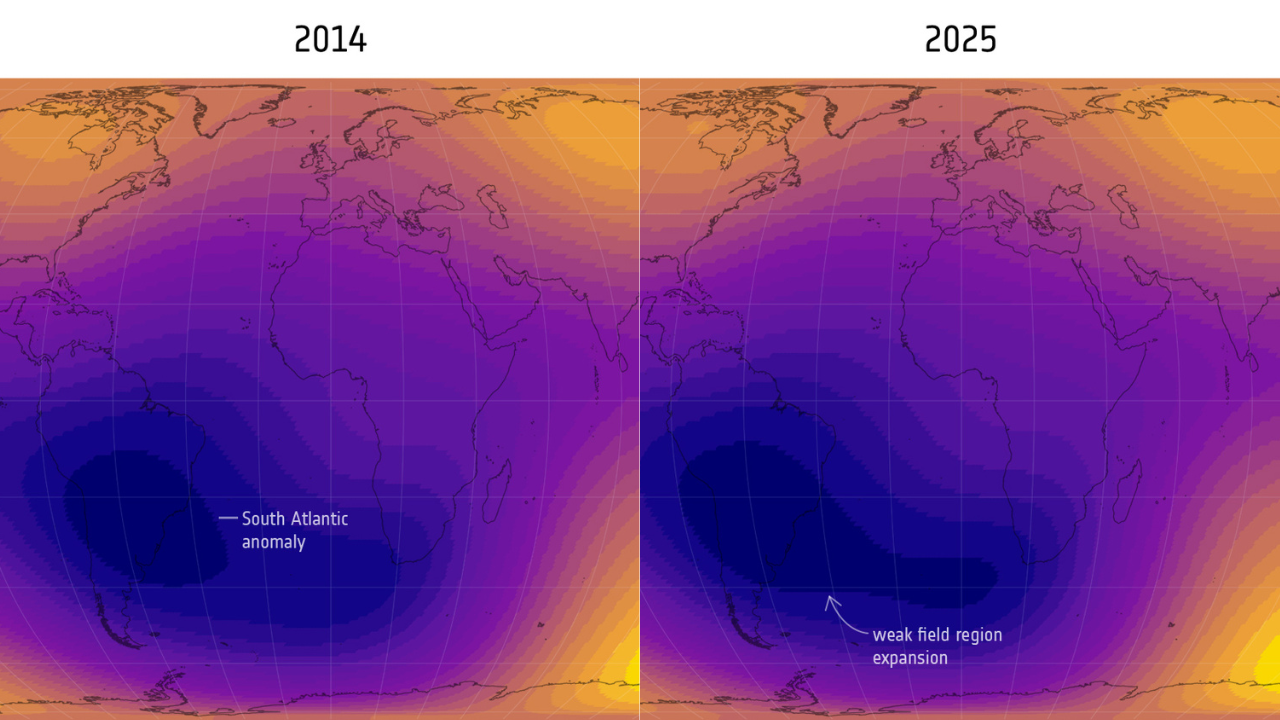The International Space Station (ISS), a landmark example of cooperation in space, will be deorbited by the year 2030. The station was launched in 1998 with a 15-year limit on its initial mission but has helped substantially in the areas of…
Category: 7. Science
-

A massive weak spot in Earth’s magnetic field is growing, scientists discover
A weak spot in Earth’s magnetic field over the South Atlantic Ocean has ballooned in size since 2014, satellite data reveals.
The region, known as the South Atlantic Anomaly, has grown by an area nearly half the size of continental Europe,…
Continue Reading
-
Just a moment…
Just a moment… This request seems a bit unusual, so we need to confirm that you’re human. Please press and hold the button until it turns completely green. Thank you for your cooperation!
Continue Reading
-

Researchers Reveal How Plants Make Anti-tumour Drugs
UBC Okanagan doctoral student Tuan-Anh Nguyen, left, and Dr. Thu-Thuy Dang examine plant samples in their lab. Their research has uncovered how tropical trees produce mitraphylline, a rare compound with potential anti-tumour…
Continue Reading
-

Chiral chemical fuels trigger two very different supramolecular self-assemblies | Research
The self assembly of molecules into supramolecular structures responds to a variety of triggers, including light, temperature, pH and chemical stimuli. Now, researchers have discovered that chemical fuels can drive molecules to self assemble…
Continue Reading
-

Cheese Cave Fungi Help Scientists See Evolution In Real Time
What do you get when you propose to someone at a cheesemaking facility? Hopefully a yes, if they’re not too put off by the smell – but as a new study has shown, you might also end up with the ability to witness evolution in real time.
That’s…
Continue Reading
-

The Role of SLC7A11 in Tumor Progression and the Regulation Mechanisms
Introduction
The solute carrier family 7 member 11 (SLC7A11), also known as xCT, is a member of the solute carrier family 7 and mainly serves as a key subunit of the cystine/glutamic acid transporter, participating in the transport of amino…
Continue Reading
-

A simple fatty acid could restore failing vision
Changes in eyesight are one of the most familiar effects of getting older. Sit in a dim restaurant with someone over 60, and you might hear, “Hold on — let me pull out my cell phone. I need more light to read the menu!” But what if declining…
Continue Reading
-
Just a moment…
Just a moment… This request seems a bit unusual, so we need to confirm that you’re human. Please press and hold the button until it turns completely green. Thank you for your cooperation!
Continue Reading
-

Comparative analysis of Chloroplast genomes in 48 samples from 5 species and 2 varieties of Agropyron Gaertn. (Poaceae, Triticeae) | BMC Genomics
Soreng RJ, Peterson PM, Romaschenko K, Davidse G, Zuloaga FO, Judziewicz EJ, et al. A worldwide phylogenetic classification of the Poaceae (Gramineae). J Syst Evol. 2015;53(2):117–37.
Google Scholar
…Continue Reading
